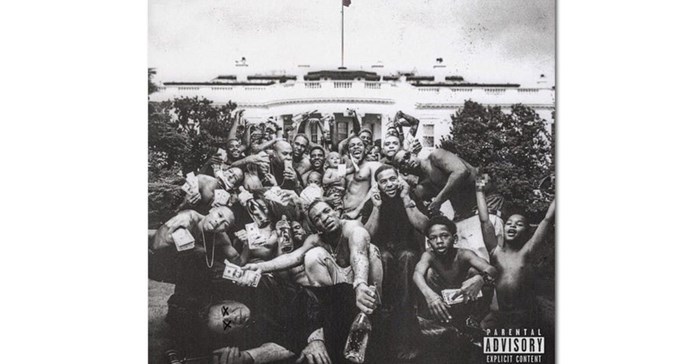Royalty in To Pimp A Butterfly

“No, I don’t think so,” I said. Which was always a treat, as one of my favourite pastimes is being introduced to new music. As we listened, I got this feeling that I owned the world - it was my oyster, everything was going to go according to plan. Then the defining line came - “By the time you hear the next pop, the funk shall be within you” - and by god, it was true. Kunta Kinte had been evoked.
To Pimp A Butterfly (TPAB) is a defining record of our generation. Hailed as a classic near immediately after release, the album integrates jazz, retro funk and soul production - all culminating in something that still captivates its audiences six years later.
The Blacker the Berry
TPAB was Lamar’s launch into being acknowledged as the voice of a generation. Besides being a nuanced account of his upbringing in Compton, Alright became the unofficial anthem for the #BlackLivesMatter movement. As you listen, you are faced with issues of race, oppression, faith - a dense social and political commentary woven as strands of music and lyrics into a complex tapestry of modulation.
Not only considered then as a flawless rap album, TPAB is a dedication to the struggle of the Black American. In tandem with its ties to the #BlackLivesMatter movement, the album speaks to a time of political turmoil and the continuous struggle faced by Black Americans, still today.
Running the game
It is, however, a message of hope. Beyond the message, you find yourself being transported by the musical diversity - the musical brilliance. Lamar rose to impressive heights with the release of TPAB, and with it, we got a better glimpse into the man behind the artist.
What always interested me is the privacy Lamar keeps. Looking at his social media, the only thing he really alludes to is his craft - and that is something we can truly, possibly, aspire to in an age where social media dictates a large portion of our perspective on people. Not using that to his advantage (or disadvantage), and still being considered one of the best (if not the best) rapper alive, is an inspiring dedication to building an audience based on a message through his music.
Beyond this, TPAB was also inducted into the Harvard Library in acknowledgement of its cultural significance.
u and i
The cultural significance with this kind of album falls under more than what Lamar is rapping about. Interestingly enough, the initial inspiration for the album came from South Africa - Lamar had visited South Africa, which included seeing Robben Island where Nelson Mandela was held prisoner for 17 years - after his visit, he said he "felt like I belonged in Africa. I saw all the things I wasn't taught."
An interesting quote, as we could have a separate thought process on the institutionalised racism that exists in schools around the world.
So we have a masterpiece of art that found itself grown and nurtured from the horrors of South Africa's history, but itself is a projection of love and hope to the people listening to it. At base, the story of a young man who found himself 'pimping' out his talent to rise to the occasion - to rise to the artist he wants to be, and not who the world was telling him to be.
Beyond anything else, TPAB is lyrically, musically, and structurally brilliant.
Although it’s been under a decade, I have no doubt that To Pimp A Butterfly will hold its significance until we are 80 and reminiscing about our music.
"Bitch, where you when I was walkin'? Now I run the game got the whole world talkin', King Kunta”
We’ll surely be watching you continue to be King of the game, Lamar. And I’m looking forward to it.
About Emily Stander
- The whisky aperitif for everyone - how does it hold up? - 16 Jan 2023
- Behind the opening of Asian-inspired restaurant Awara - 15 Dec 2022
- Behind the scenes with Tropika Island of Treasure winners - 5 Dec 2022
- #OnThisNote: Take me to Graceland - 10 Nov 2022
- Immersing Africa in the world of NFT art - 14 Oct 2022
View my profile and articles...